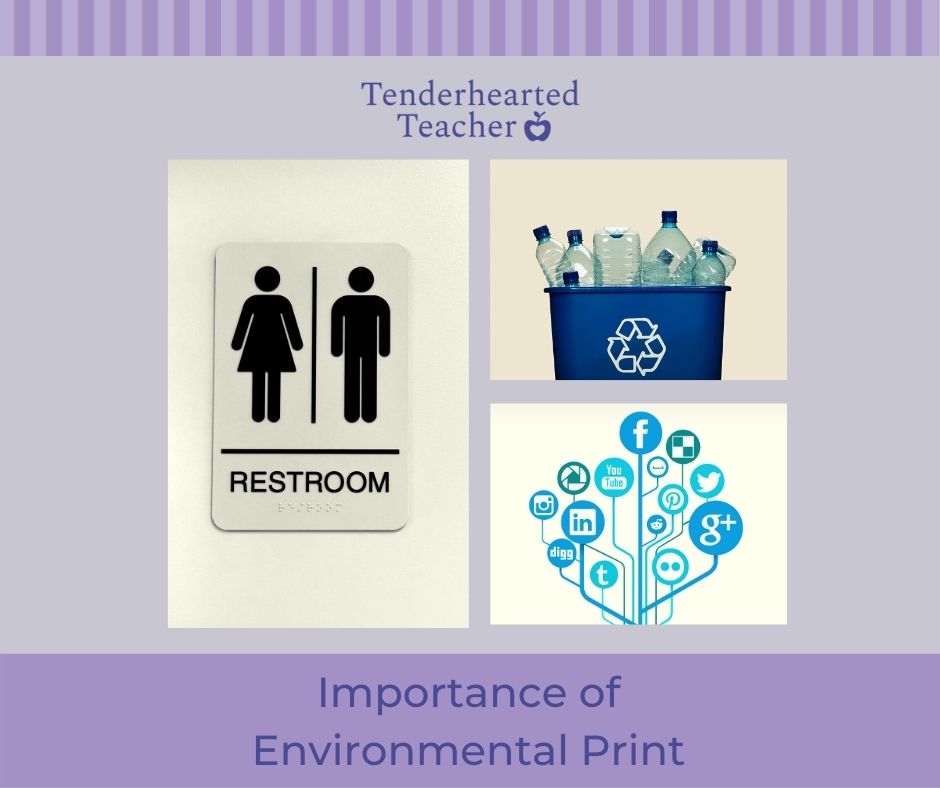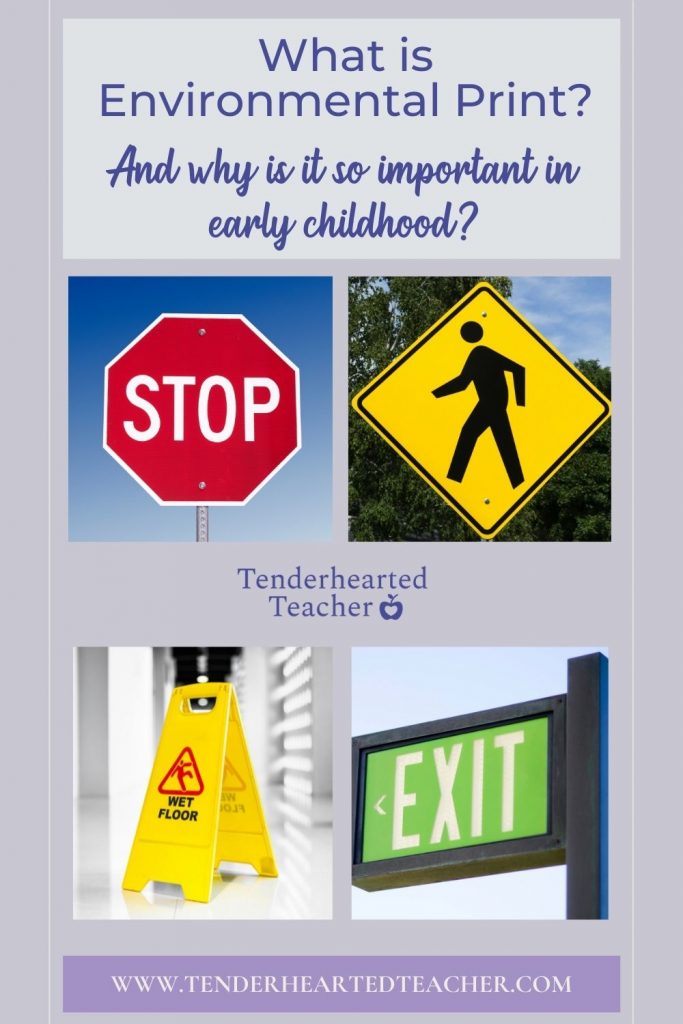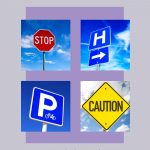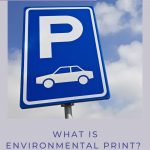
Environmental print is defined as print that is seen in every day life. Examples of this are brand logos, labels, street signs, etc. You probably recognized the signs featured above without much thought. You were able to do this because you are constantly exposed to these signs and symbols in your daily life and you have been since childhood.
Why is Environmental Print Important?
Research has shown that environmental print is often a child’s very first exposure to print because it surrounds us all every day. Exposing young children to environmental print is crucial to early literacy because it allows them to understand that words and symbols convey messages. In fact, environmental print is often the first thing children learn to “read.” Additionally, when children begin to write they often try copying what they see in their environment. You can read more about the stages of emergent writing here.
It is shown that interactions with environmental print in the child’s sociocultural context can develop their logographic reading skills. These skills, in turn, promote the development of emergent literacy skills that are the precursors to conventional reading skills. Environmental print may also be used more directly when parents and childhood educators use it to scaffold the learning of emergent literacy skills.
(Neumann, M., Hood, Ford & Neumann, D., 2012, p. 231)
I often do an activity in the classroom in which I put images of environmental print on the board and have students call out what they see. More often than not, children as young as 3 are able to name common environmental print such as popular restaurant chains and food companies. Parents and families can help children recognize these common symbols by actively pointing them out, in and out of the home. When parents make a point to talk about this type of print with their children, it has more of an impact than just passive exposure.
Suggested Activity
In addition, here’s an easy activity that you can do at home. Create a book with your child using print found around your home. This will help them become familiar with it. Cut out labels and logos from magazines, catalogs, and product packaging. Then sort them by category (like street signs, food labels, toy logos, etc.) and paste them onto sturdy paper. You can even laminate your pages or put them into plastic sleeves and pop them into a binder. When your book is all done, ask your child to read it to you. It’s important for children to have books read to them, but it’s also important for them to read to others (even if they are just making up the words as they go. But, in this case they won’t have to!)
If you’d like more information on how to teach your child important literacy skills, please download my Free Literacy Guide.

Now talk to me! Have you ever talked about this type of print with your little one? Share your comments or questions below.
Reference: Neumann, M. M., Hood, M., Ford, R. M., & Neumann, D. L. (2012). The role of environmental print in emergent literacy. Journal of Early Childhood Literacy, 12(3), 231-258. https://doi.org/10.1177/1468798411417080
SAVE THIS TO PINTEREST




Everyday life is reflected in environmental print. This is the name given to the print on signs, labels, and logos. Street signs, candy wrappers.
Informative post and nice activity.
Thank you!
This is such an insightful post! I never realized how critical environmental print is for preschoolers’ literacy development. It’s fascinating to think about how familiar signs and labels can empower young learners. Thanks for highlighting its importance in early education!